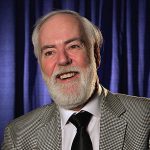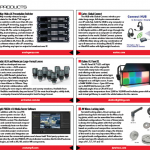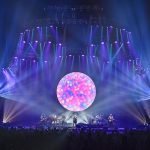
Promising “an Usher experience like they’ve never seen or heard before,” R&B superstar Usher Raymond IV announced his upcoming residency in Las Vegas in September 2020. The show was scheduled to open on July 16, 2021 and would play for 12 performances — eight in July, three in December, and a final date on Jan. 1, 2022. As the pandemic dragged on, however, the question remained: Would Las Vegas be fully operational in time for the show to come together? Would audiences return?
While the production community waited for signals that the show would be able to open as scheduled, creative directors Simon Hammerstein and Richard Kimmel worked with Usher on the narrative. They developed a through-line in five acts, beginning with a fresh perspective on their current setting: What if Las Vegas had been run from the beginning by wealthy Black entrepreneurs? This concept became the foundation for a retelling of Usher’s life, from his beginnings in Atlanta — including his connection to the city’s world-famous adult entertainment club, Magic City — to his romantic past. Finally, the show’s finale would take place far in the future, celebrating the love of outer space and storytelling that Usher has illustrated in a number of his music videos.
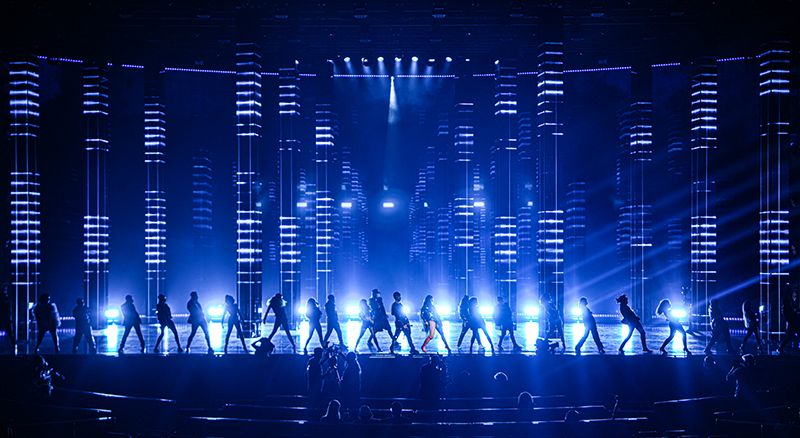
The design team, including Production Designer, Paul Tate DePoo III; Costume Designer, Emilio Sosa; and Lighting Design by John Torres and FragmentNine, who also handled Screens & Content Design, internalized the star’s purpose from the outset, said Jeremy Lechterman, founder and principal at production design firm FragmentNine. “He’s had such a long and storied career, he has flirted with a lot of genres, and he’s also telling the story of his life. He wanted to present it faithfully, but also dramatically.”
Such a detailed and varied program normally would require months of planning and construction time, but because of Covid-19, Usher’s residency hung in the balance. Finally, in April 2021, the production team got the green light to proceed toward the July 16 opening date. The team had just three months to pull off the complex show.
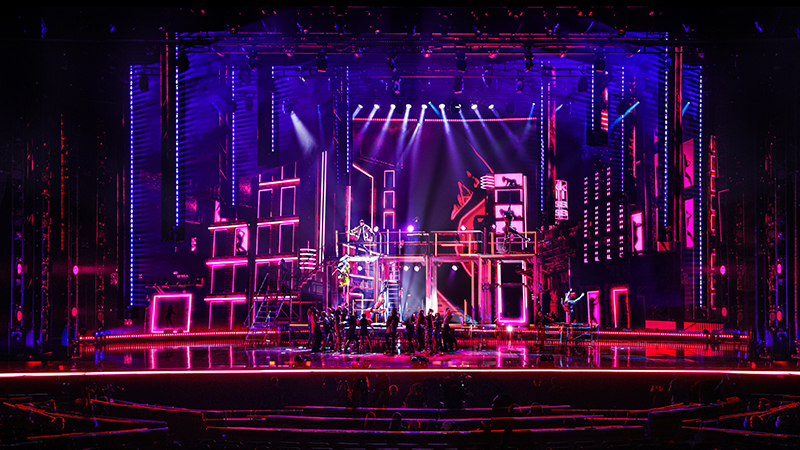
Lock and Load
“Our first meeting was April 12 or so,” said Jackson Gallagher, FragmentNine principal. “We had all just gotten vaccinated; it was our first time back in the world safely. So we all locked ourselves in the basement of the Colosseum for a design charrette for several days.”
This produced a torrent of ideas, the group agreeing that the show would present “singular grand statements,” said Lechterman. “Not technology-forward, but scenography-forward.” What often happens with superstar residencies in Vegas, Gallagher said, is “a lot of flash and trash.” This creative team wanted to create spectacle with meaning. Indeed, Gallagher said, “we ended up with an almost operatic design — not your typical Vegas residency.”
The show takes place in five acts, with changes happening at a relentless pace throughout its roughly 100-minute run time. The first act centers on bright colors, moving lights, video and lasers to portray the thrill of a night on the Las Vegas strip, but with a distinctly modern, R&B and hip-hop sensibility. Usher opened the show with “My Way,” popping up in the audience and dancing his way to the dancers on stage.
Lights and visual effects dominated this act, saving the moving scenic elements for Act II, when the giant LED back wall came alive with a stylized Atlanta skyline. Creating this vivid environment pushed the animators to use a different set of skills and tools, said Lechterman.
“We went into this thinking we’d use a lot of Unreal or Notch, because they are the hot new tools for 3D environments,” he said. “But a lot of what we did turned out to be scenic painting and what our animators were best at. There was some 3D, but as we always say, we are a design and technology company and we bring both sides to the project.”
With flamboyant video in the background and images flashing from the moving columns, a two-story structure glided in from both sides of the stage to connect in the center, forming the iconic multi-platform stages of Magic City — complete with poles and pole dancers.
Here, a new element came into play as well: an aerialist on a pole center stage, using an F515 computer-controlled rope winch to suspend the pole from the overhead grid. The pole dancer mounted it at stage level, rose with the pole, completed the performance, and then rode the pole down to stage level to dismount before the pole flew back up into the grid.
“Paul Tate DePoo III, the production designer, was the architect of these spaces,” said Lechterman. “He would do beautiful Photoshop renderings with collages of these places, and we would recreate his renderings in an animated world. He approaches things scenically — it stretched us as designers and animators. It created an end result that we would not have had without his input. It was complicated, but the show was better for it.”
To create these environments, the production needed the ability to metamorphose fluidly using automation, with no breaks in the action. The team solved this by using 12 columns, four of which could move on three axes as the scenes required: across the stage, up and downstage, and even rotating 180 degrees. The custom-built, 32-foot-high columns were each 30-inches-wide and displayed LED video content on three sides, with LED light bars on the fourth side. All of this technology required careful integration with the movement of the columns, a job for LMG Touring.
The result: the flexibility to create a unique mise en scène for every song, giving each its own tone and identity within the places defined for each act.
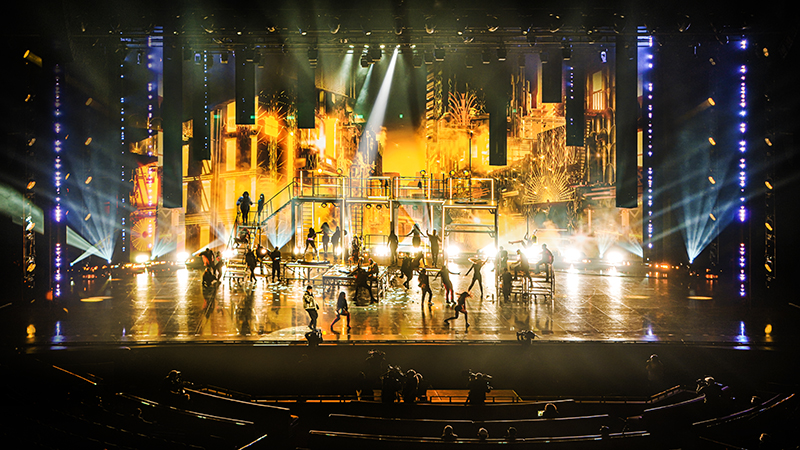
“For Act I, the columns formed the club, with forced perspective,” said Gallagher. “We didn’t give away too much of the automation ability right away. Then when we went to Magic City in Act II, we had Atlanta-inspired cityscapes, different color palettes, and even the sun at one point.”
To achieve the real-time, latency-free video capability the show required — and to synchronize perfectly with the stage motion control — FragmentNine used two disguise gx2c and two disguise vx4 servers, a Christie Spyder X80 image processor, and four Christie Boxer Series 3DLP projectors. The Colosseum furnished the 110-feet x 42.65-feet Daktronics house LED wall, while LMG provided the 12 LED columns.
Three runs of 120-foot-long video track truss held the extensive rigging for the moving columns. Supplied by TAIT, the rigging included TAIT Trolleys, Rotators, Coat Hangers, and Nav Hoists, controlled with TAIT’s proprietary Navigator Automation Platform. Using timecode and PSN networking, Navigator synchronized with the lighting, content effects and automation cues for seamless execution.
“With multiple performers onstage as the video columns were consistently moving, accuracy was everything,” said Logan Lower, TAIT project manager, in a prepared release. “Navigator allowed us to control it all with perfect precision … It was absolutely key for the success of the show.”
Gallagher and Lechterman had only seen the columns in DePoo’s renderings before they finally appeared on stage, so they waited with trepidation to see what they would finally look like. “Filling that huge stage is tough,” said Gallagher. “Were the columns going to look like toothpicks onstage? But when we saw them hanging the first one and it came to life, we saw that it was massive.”
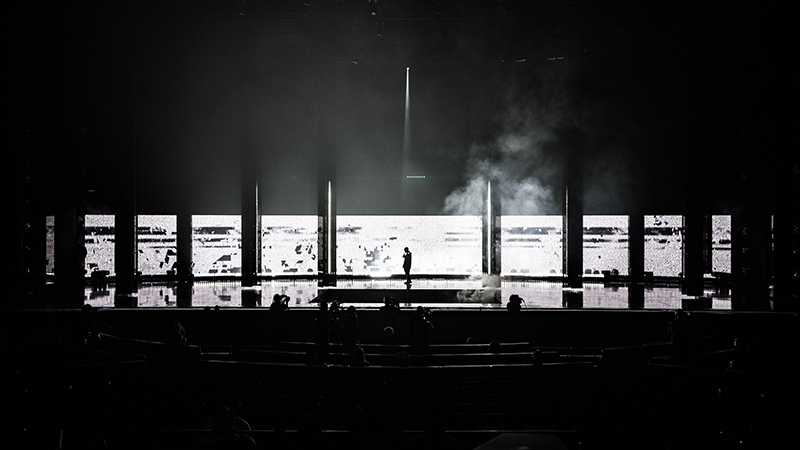
In contrast to the high-energy, intensely theatrical first two acts, Act III took place in Usher’s bedroom as he reflected in song on relationships that shaped his life. The video wall went solid with uniform color as the lighting turned Usher into a silhouette, and the four moving columns became the head board of his bed. This gave the FragmentNine team the opportunity to create the moment in the show of which they are the most proud.
“For “Climax”, we used little sizzle strobe lights and glitchy TV static,” said Lechterman. “It was an eleventh-hour decision — there wasn’t going to be any video for this song. The idea of using that kind of video, having that aesthetic… it was so simple, but intricately tied to the meaning of the song. Usher’s performance of “Climax” is the most raw and introspective in the show. At the end of it, we go to him with a single rear spot, and he’s just lying on the floor.”
This made the transition to Act IV even more powerful, said Gallagher. “There were some fantastic costumes and wigs for the dancers in outer space,” he said. “That’s when the lasers came out.” ER Productions provided the lasers, with Lawrence Wright serving as programmer.
The designers turned up the high-energy lighting effects to full for this final act, which takes place in the Club of the Stars — the stars, in this case, being the ones in space. These two acts benefited from the extensive in-house lighting package the Colosseum supplies, including full complements of Vari-Lite VL3000 spots and VL3500 washes, and plenty of Robe T1 Profiles, Robin Color Strobes, Tarantulas, and MegaPointes for high-energy, intensely bright effects. Thirty-two Coemar Infinity Wash XLs provided the super-bright beams and color mixing that lighting designer John Torres and FragmentNine required to achieve a continuous series of effects.
In addition to the house package, Torres used a healthy lighting rental inventory from LMG Touring that included Chroma Q Color Force IIs, additional Vari-Lite and Robe spot fixtures, three Robe RoboSpot BMFL Followspot Systems, 38 Aryton MagicPanel FX 602 3D moving head luminaires, 68 GLP impression FR10 Bars, and 60 Martin VDO Sceptron 10 LED video fixtures. Two Master FX Mystic Haze Generators worked overtime throughout the production, giving definition to all manner of beams and lasers. Two MA Lighting grandMA3 lighting consoles and an MA3 Light controlled the vast array of lights and effects.
Pulling off this massive feat in just three months made this a particularly harrowing experience, said Gallagher. “The programmers worked around the clock,” he said. “Benny Kirkham and Jason Baeri were pulling 12- to 16-hour days with no days off. It was so much effort, and things didn’t settle until the first performance. We had never run the show end to end — not in a good way — until Friends and Family Night, the Wednesday before opening. By the time we had our first audience, it looked completely different from the week before.”
“It really did take a village,” said Lechterman. “We had a Covid-19 scare in the middle of production. We were threading the needle, right after the first lockdown ended and the Delta variant started. I was so on edge about the process that I didn’t even want to go to opening night.” But in the end? Lechterman grinned. “Objective achieved,” he said.
Randi Minetor is an author and freelance writer based in upstate New York.
